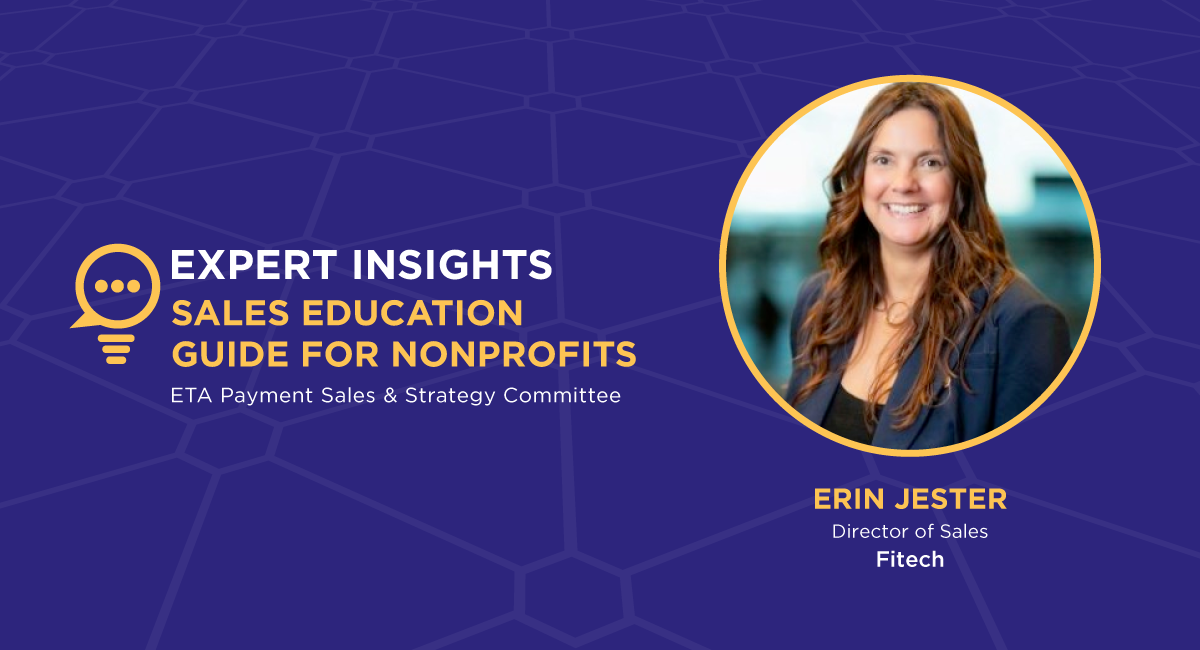ETA Expert Insights: Sales Education Guide for Nonprofits

Erin Jester, Director of Sales, Fitech
ETA Payment Sales & Strategy Committee
The specialized area of nonprofit organizations and churches comprises many customers. Nonprofits are legal entities organized and operated for a collective, public or social benefit with sizes ranging from very small to nationwide and all with a 501c3 tax designation. No matter the size, they all have similar needs for processing and a large desire to keep fees as minimal as possible.
There are many nonprofits within your community, from a local food bank or shelter to a school or group/organization raising funds for their sports team or other events. Their needs range from offering fundraising events year-round, while some organize one significant fundraising event yearly.
Technology
Technology for this group needs to be efficient and effective while remaining easy to use with a minimal fee. Examples include:
- Offering a seasonal option for billing and fees.
- Mobile devices/terminals and Bluetooth-enabled card readers.
- Software that allows text-to-give, customizable giving pages, and simple one-click emails.
- Integrated databases and donor-centric systems that allow for more accurate solicitation and donor segmentation, along with the ability to manage donor profiles and giving frequency.
- Live-streaming and auction (live and silent) services.
Risk/Underwriting
As with any merchant, there is always charge-back and fraud risk. Verifying that the specific person or entity you’re working with is a legitimate organization, not someone looking to defraud the public for financial gain, is essential. Due diligence required to approve a nonprofit or church:
- Collect a couple of months of bank statements, gather industry referrals, a signed letter from the board of directors, and minutes from board meetings.
Sales Strategy
Consider how those organizations currently accept payments and think about the services you can offer and how that might help these organizations. The easier it is to donate, the more funds can be raised to support and sustain these groups.
- Work closely with those in a community you know and offer consultative services that will fit their specific needs.
- Don’t just try to sell them the latest and greatest solution that may be too expensive or too complicated for their needs.
Nonprofits and churches are close-knit communities and share resources with each other. The better the experience they have during the solution process, the more likely they will provide you with a referral to similar organizations.
This article is part of a series by the ETA Payment Sales & Strategy Committee
Sales Education Guide for B2B/G
Sales Education Guide for High-Risk Verticals

